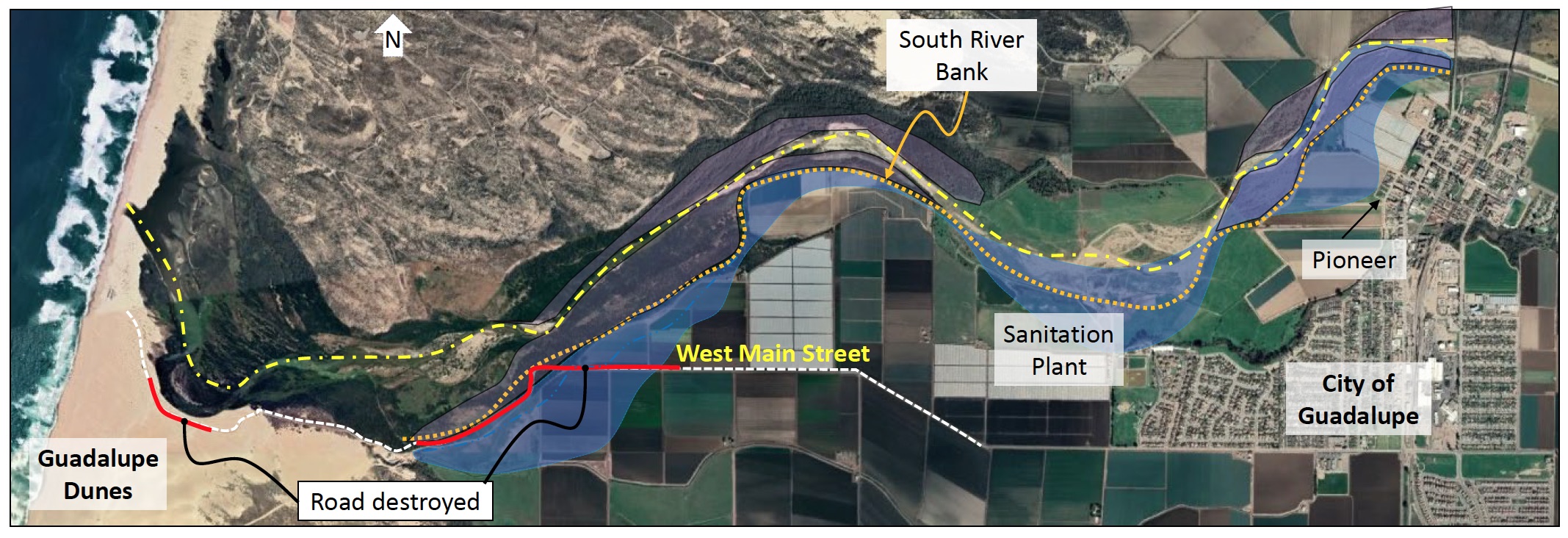Santa Barbara County heard a few rumbles of thunder and got a tidy amount of rain on Thursday in a month that historically rates zero percent for rain. Instead, rain gauges registered as much as 0.8 inches in the hills above Carpinteria but a quarter-inch or less most everywhere else today. The clouds and rain alleviated the hot temperatures in the valleys, though the summer heat is expected to return by Sunday. Tropical Storm Eugene brought the rain as it made a northward trek over the past four days, a reminder that a strong El Niño might arrive this winter.
It’s still too early to know if loads of rain will accompany this El Niño, said Eric Boldt with the National Weather Service, adding that the last one in 2015-16 delivered less than 7 inches of rain for the season. For the short term, another tropical storm is forming off Baja — hurricane season usually goes through November — and another round of showers was possible about 10 days from now, Boldt conjectured. The county is at 200 percent of its normal amount of rainfall.
After a series of atmospheric rivers sent heavy rain, snow, and floods cascading across the state this past winter, California is taking no chances. Governor Newsom issued an executive order on August 4 to create shortcuts through Fish & Wildlife and water agencies to expedite levee repairs and debris removal from the San Joaquin River and Tulare Lake, to the Pajaro and Ventura rivers of the Central Coast.
“We always plan like it’s an El Niño winter coming up,” said Scott McGolpin, Santa Barbara County’s director of Public Works. His department includes flood control, whose hydrology division’s statistics listed a big August rain in 1983 when 1.5 inches fell. The next contender was 0.7 inches in 1936, with the other years since 1901 registering in the hundredths of an inch.
The county’s flood control, roadworks, and solid waste divisions have all been working to repair the damage from the winter in anticipation of the next season, paying attention to places like bridges. In particular, the governor’s order will help with the channeling of the Santa Maria River, McGolpin said.
The historic amount of rainfall sent a tremendous load of debris and silt down the river channel, which broke out of its bounds in three places, flooding a part of the City of Guadalupe, its sewage treatment plant, and the county’s main road to the Guadalupe Dunes. As long as no water is flowing, Fish & Wildlife will allow debris removal and about one-third of the vegetation per mile, McGolpin said.
The governor’s order only extends to November 1, so McGolpin had been on the phone yesterday with Congressmember Salud Carbajal, State Senator Monique Limón, and Assemblymember Gregg Hart to expedite planning with the California National Guard and Army Corps of Engineers. It takes several years to plan and bid and permit a project like the one for the Santa Maria River, McGolpin said, where they hope to create a pilot channel to funnel the rainwater, when it comes, out to sea instead of watching it punch through to Guadalupe and the farm fields along the river. The pilot channel work will be a multi-pronged process, McGolpin said, that will begin in earnest in 2024.
For the coming rain year, “It’ll take a few good storms before we see the creeks and rivers flowing again,” McGolpin said. “Today was only good for the lawn, and the weeds.”




